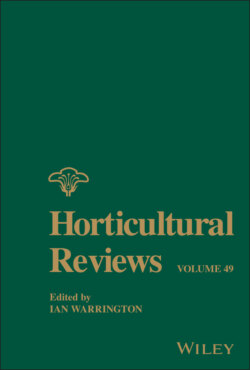Читать книгу Horticultural Reviews, Volume 49 - Группа авторов - Страница 27
H. Molecular Resources for Breeding
ОглавлениеMolecular markers can be used to facilitate the selection process by screening germplasm for markers that are linked to a gene of interest. Many types of molecular markers exist and have been used for phylogenetic analyses (De Smet et al. 2015), hybrid verification (Rinehart and Reed 2010), linkage mapping (Waki et al. 2018; Wu et al. 2020), identification of unknown species (Joung et al. 2010), genetic diversity estimates (Rinehart et al. 2006; Reed and Rinehart 2007, 2009; Ito et al. 2013; Choi et al. 2017), and predicting success of interspecific hybridizations in Hydrangea (Granados Mendoza et al. 2013). Many types of markers have been used for these studies including simple sequence repeats (SSR, or microsatellites), single nucleotide polymorphisms (SNP), randomly amplified fragment polymorphisms (RAPD), rbcL sequence, plastid sequence markers (chloroplast and mitochondrial DNA), and internal transcribed spacer (ITS) sequences.
Molecular markers can be used to develop marker‐trait associations, which can then be used to guide parent or seedling selection (Collard and Mackill 2008). Genetic markers have yet to be used for selection in H. quercifolia, although success in other species has been realized and the first genetic map has recently been developed in H. macrophylla (Waki et al. 2018). Selecting for traits which cannot be reliably phenotyped until maturity, with markers, will increase breeding efficiency by allowing the breeder to know what characteristics to expect early in the breeding cycle, thereby potentially reducing the breeding cycle by several years. Markers linked to double flower and inflorescence type genes in H. macrophylla are a prime examples (Waki et al. 2018; Wu et al., 2020).
Microsatellites have been developed for Hydrangea that are informative at both the inter‐ and intraspecific level (Rinehart et al. 2006; Reed and Rinehart 2007, 2009; Choi et al. 2017; Hempel et al. 2018; Waki et al. 2018). Microsatellites are sequences of several nucleotides that repeat several times consecutively (Gupta et al. 1996). Thirty‐nine SSRs have been developed for H. macrophylla (Reed and Rinehart 2007), 14 of which were informative for determining species relationships within the genus, including H. quercifolia (Rinehart et al. 2006). Microsatellites have also been utilized in H. luteovenosa to estimate the genetic diversity and conservation status of a critically endangered population in South Korea (Ito et al. 2013; Choi et al. 2017). Recently, a genetic map of H. macrophylla with 147 SSR loci was developed (Waki et al. 2018); it is unknown if these markers would be useful in H. quercifolia.
Single nucleotide polymorphisms (SNPs) are highly abundant mutations throughout genomes (Semagn et al. 2006). SNPs are either single base‐pair substitutions or insertion/deletion polymorphisms and are therefore considered to be biallelic markers. Genotyping by sequencing (GBS) is a technique which harnesses high‐throughput sequencing technology to simultaneously identify and genotype thousands of SNPs by reducing genomic complexity, using restriction enzymes prior to sequencing (Elshire et al. 2011). GBS has recently been used inH. macrophylla (Tränkner et al. 2019; Wu and Alexander 2019) andH. quercifolia (Sherwood et al. 2020).
